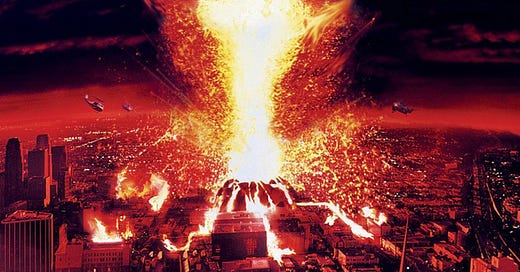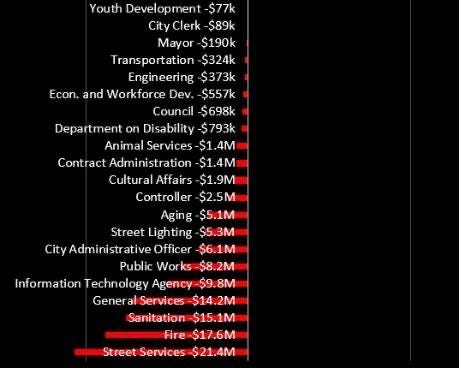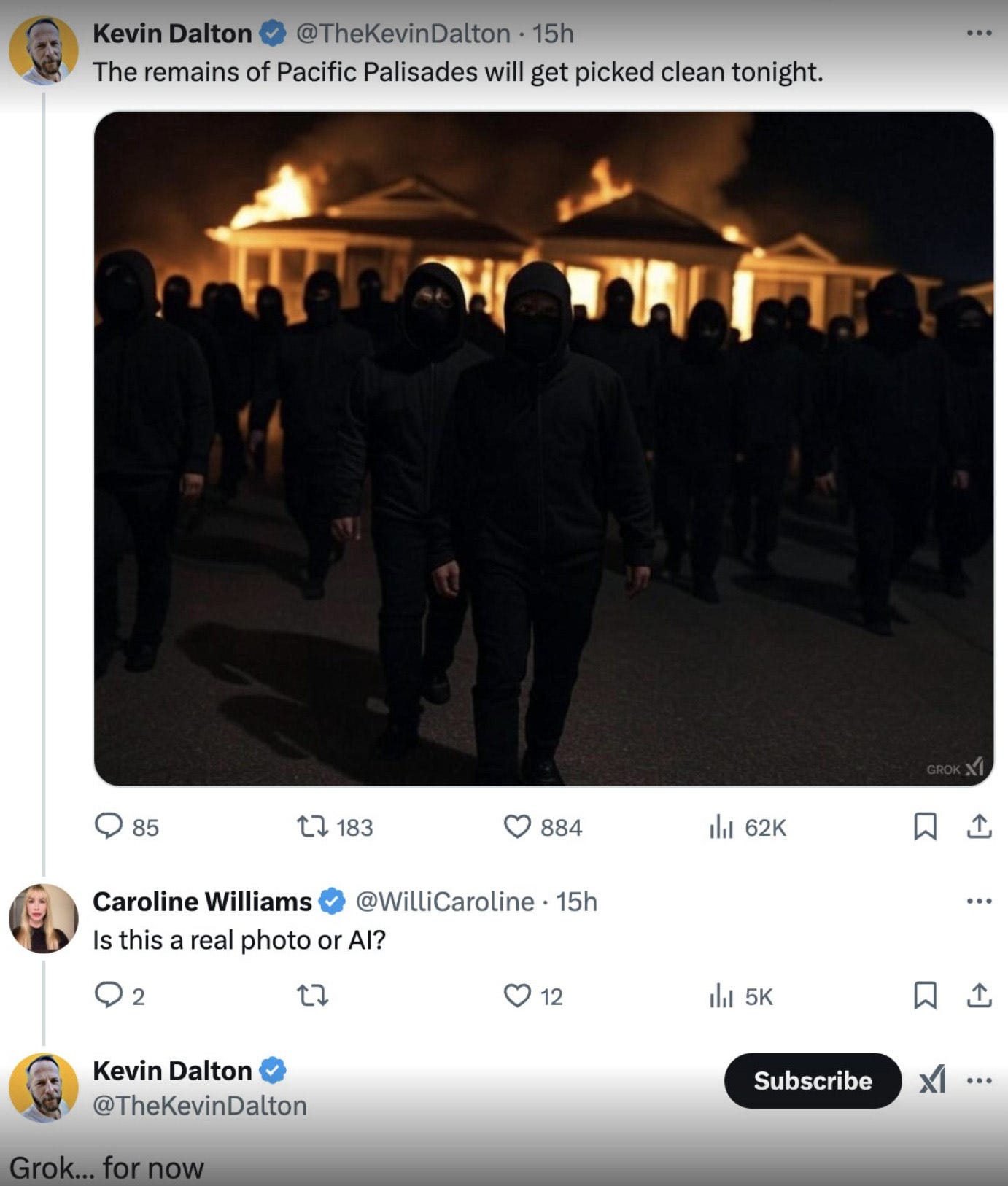My past few nights have been spent, like so many others, looking at endless pictures and videos of fire in my hometown. Houses burnt to the ground, rich people walking their prized horses down the street as they abandon cars on the road (which the fire department has to bulldoze to try and put out the fire), fire hydrants coming out dry, grandmas who didn’t want to leave their first home dying, etc. I text my friends and family to make sure they are safe, and they, too, are watching, as they pack bags in case they’re told to evacuate. My family luckily lives on Los Angeles’ south and east sides, relatively far from the brush fueling the fire. They talk to me about deathly bad air quality and ashy sunsets.
In Portland, the cold winter skies were calm and unusually clear today. But I have been thinking back to the massive wildfires that took over Oregon in 2020, right after Labor Day weekend. They left the whole Portland metro area on evacuation alert, as purple smoke swallowed the city whole. A feeling of pure climate panic as smoke filled my living room. With no reprieve from the air quality, my then-partner and I took our cats and drove to her parents’ house in Idaho. The purple plums of smoke and ash blocked vision so we could hardly see twenty feet in front of us as we drove on I-84, but when we finally cleared the mountain range in eastern Oregon the purple smoke relaxed to a bearable orange smog-like haze. It was the middle of the pandemic, so when we arrived in Boise, we saw people hosting a KN95 mask burning at City Hall to protest the city’s indoor mask requirements. Climate panic eventually became climate rage the second we felt somewhat secure.
What’s happening in Los Angeles was not only predictable, it was guaranteed. Westside elites abide only by the virtue of expanding and protecting the property values of multi-million dollar homes in Pacific Palisades and Malibu. While the red-blue politically divided country will try to tell us that climate deniers in charge of oil companies are fueled by the lifted truck lovin rednecks burning masks, the blue blooded elites who build palatial mansions in West Los Angeles share the load. It’s their ethos that has run the west side of Los Angeles for a hundred years, the fuel that takes many repeating fires decades over to make a super fire during tropical storm-like winds that ensures that the rest of us will burn. To some Los Angeles may be a “liberal” city, but it’s one that defunds the fire department while expanding police spending, allows for crude oil drilling within its city limits, while building a labyrinth of freeways at the cost of mass transit.
Mike Davis wrote in the “Case for Letting Malibu Burn,” a chapter in Ecology of Fear about the history of fires in this powder keg region of Los Angeles County, that due to vegetation like chamise chaparral, coastal sage scrub, and live oak woodland, “a great Malibu firestorm could generate the heat of three million barrels of burning oil at a temperature of 2,000 degrees.” For years the land’s native people managed fires with prescribed, controlled burns. However, this problem of ever-growing fires surged along with property values in Malibu (and Pacific Palisades) since the 1920s. Each past decade saw several destructive fires that only continue to grow in size.
Later, these fires were naturally subdued by fire retardant fruit trees surrounding the city, which were replaced as land became seen as buildable plots for subdivisions. Lot sizes grew, and controlling vegetation further privatized. When a large swath of Malibu was available to be taken by the city of Los Angeles after a fire in the 1950s, we said, “No, let’s sell these properties again,” and the focus was put on protecting the houses with fire retardant roofs. Incentives, tax breaks, and subsidies were offered to some of the country’s most wealthy “victims” of these brush fires, while those living in slum apartments and the sick and elderly in adjacent retirement communities are left to die. Private cars further insulated these communities, paving the way for freeway expansion and the images of dangerous car evacuations today as people are stuck in bumper to bumper traffic when they need to evacuate.
These same rich people who own homes in the area are only now potentially being left holding the bag with home insurance companies like State Farm dropping coverage less than a year before the fire.
Recently, I talked about the 1997 disaster movie Volcano, in which Los Angeles is engulfed in flames, on my friends’ podcast. In the movie, those same NIMBY and developer types are fighting against a Metro Red Line extension near Beverly Hills. The public transit development happens to be on an active fault line, which incites an underground volcano that destroys the westside of Los Angeles, not far from where the fire rages today. This movie more or less tells us that public transportation projects are dangerous, and while the NIMBYs may come off as self-interested, they are ultimately correct when pointing at the dangers of the project. Some city workers, namely firefighters, disaster responders, and doctors, are shown as the real heroes in a time of disasters, while the police ineffectually punish those responding to crises or just stand around. At one point a NIMBY bemoans that looters are in Beverly Hills, but this concern is ignored. Lava is flowing in Hollywood for Christ sake!
That this somewhat silly 90s movie is relevant today seems all too obvious. Climate change is the sunken volcano of our car-dependent creation. Yet still we cannot let the rich homeowners and their quest for an ever-increasing home value line on a graph (and in their bank account) off the hook. If oil executives drawing up car-centric cities are the leaders driving climate denialism, wealthy homeowners are the base that hold them up. In reality the NIMBYs created the volcano.
Davis’ essay concludes, “Two kinds of Californians will continue to live with fire: those who can afford (with indirect public subsidies) to rebuild and those who can’t afford to live anywhere else.” Each disaster compounds in intensity and fuels the next, and while some write off that it is only happening to dumb rich people, the choices we have are completely obscured in the ashy rubble. As I write this, the fire has jumped to Runyon Canyon in the Hollywood Hills threatening more of the working class neighborhoods in West Los Angeles, with neighborhoods in Altadena and Pasadena already facing devastation. The wealthy’s pile of kindling was arranged to make sure working people go up too. The rich in charge learn nothing. Like the oil executives, their singular crusade to preserve home values is just as much the fuel of climate catastrophe. Just blame the fire, then rebuild again. The market tells us that beachfront and mountain view property is the only thing worth more than gasoline, only their privately maintained dry brush burns brighter, hotter, and more violently.
Here’s a Los Angeles emergency resource guide and a mutual-aid resource list, keep updated on evacuations from Cal Fire. Stay safe. Stay together. Protect people, not property.






